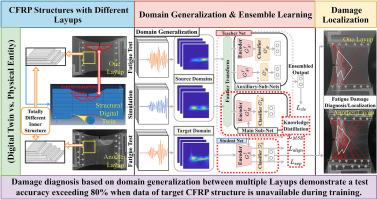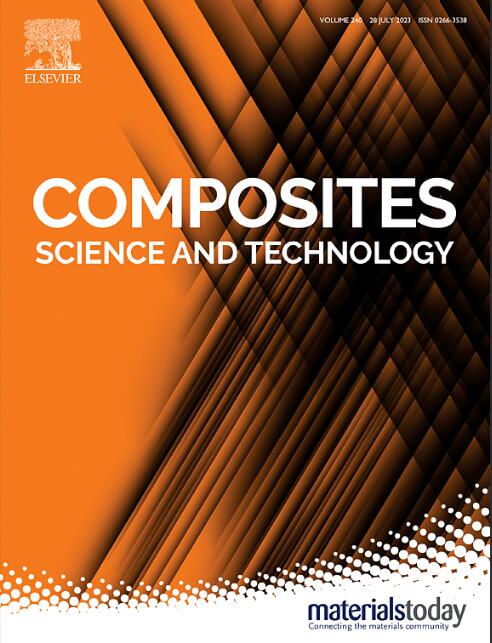Domain generalization-based damage detection of composite structures powered by structural digital twin
IF 8.3
1区 材料科学
Q1 MATERIALS SCIENCE, COMPOSITES
引用次数: 0
Abstract
This research addresses the challenge of generalizing deep learning models for different CFRP composite structures in the task of fatigue damage detection. To overcome this challenge, knowledge distillation is employed to enhance the generalizability of deep learning models. A teacher network processes continuous wavelet transform images using Fourier transform and neural networks, while a student network distills the teacher network. This framework improves the models' generalization performance by transferring knowledge from the teacher network to the student network. Additionally, soft gradient boosting is utilized to further enhance the generalizability. By constructing a main sub-network and multiple parallel auxiliary sub-networks within the teacher network, the student network mimics the main sub-network to achieve improved accuracy in the target domain and prevent overfitting. To augment limited datasets of real CFRP monitoring signals and help to learn domain-invariant features, structural digital twin technology is leveraged to generate simulated monitoring signals, which enables the models to capture domain invariant information, significantly enhancing its performance of fatigue damage detection across different structures. Damage detection based on the generalization results between multiple Layups demonstrates a test accuracy exceeding 80 % when the monitoring data of the target CFRP structure is unavailable during training. Therefore, the cross-structure damage detection ability of the proposed approach is well proved.

基于领域泛化的复合材料结构损伤检测,由结构数字孪生提供动力
本研究解决了在疲劳损伤检测任务中针对不同 CFRP 复合材料结构推广深度学习模型的难题。为了克服这一挑战,我们采用了知识提炼的方法来增强深度学习模型的通用性。教师网络利用傅立叶变换和神经网络处理连续小波变换图像,而学生网络则对教师网络进行提炼。这一框架通过将知识从教师网络转移到学生网络,提高了模型的泛化性能。此外,还利用软梯度提升技术来进一步增强泛化能力。通过在教师网络中构建一个主子网络和多个并行辅助子网络,学生网络可以模仿主子网络,从而提高目标领域的准确性,并防止过拟合。为了扩充有限的真实 CFRP 监测信号数据集并帮助学习域不变特征,利用结构数字孪生技术生成模拟监测信号,从而使模型能够捕获域不变信息,显著提高其在不同结构中的疲劳损伤检测性能。当训练过程中无法获得目标 CFRP 结构的监测数据时,基于多层结构间泛化结果的损伤检测显示出超过 80% 的测试精度。因此,该方法的跨结构损伤检测能力得到了很好的证明。
本文章由计算机程序翻译,如有差异,请以英文原文为准。
求助全文
约1分钟内获得全文
求助全文
来源期刊

Composites Science and Technology
工程技术-材料科学:复合
CiteScore
16.20
自引率
9.90%
发文量
611
审稿时长
33 days
期刊介绍:
Composites Science and Technology publishes refereed original articles on the fundamental and applied science of engineering composites. The focus of this journal is on polymeric matrix composites with reinforcements/fillers ranging from nano- to macro-scale. CSTE encourages manuscripts reporting unique, innovative contributions to the physics, chemistry, materials science and applied mechanics aspects of advanced composites.
Besides traditional fiber reinforced composites, novel composites with significant potential for engineering applications are encouraged.
 求助内容:
求助内容: 应助结果提醒方式:
应助结果提醒方式:


